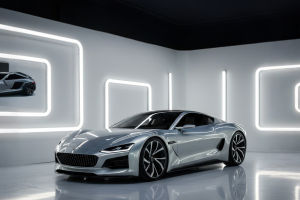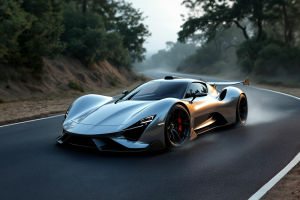Ever dreamed of gliding silently down the road in your beloved classic, powered purely by electrons? That throaty V8 replaced by a whisper-quiet hum? Lykkers, the dream of transforming your gas-guzzling gem into a sleek, modern electric vehicle (EV) isn't science fiction – it's EV conversion.
But where do you even begin? Buckle up; we're diving deep into the electrifying world of giving your car a green heart transplant.
The Conversion Dream
Imagine your favorite car, the one with character, reborn. No more gas stations, oil changes, or exhaust fumes. Just clean, instant power. EV conversion is precisely this alchemy: replacing the Internal Combustion Engine (ICE) and its noisy, oily companions with an electric motor, battery pack, and sophisticated electronics. It's about preserving automotive passion while embracing a sustainable future.
Kit Core Anatomy
Think of an EV conversion kit as the new powertrain's skeleton and nervous system. A comprehensive kit includes several vital components: the electric motor, motor controller, battery pack (usually lithium-ion), Battery Management System (BMS), onboard charger, DC-DC converter, wiring harness, and adapter plate. Optional additions like regenerative braking systems can enhance efficiency and performance.
Finding Mr. Right
Not every car is the perfect candidate. The ideal donor vehicle is lightweight, structurally sound, and offers space for battery installation. Simpler vehicles with minimal electronics integrate more easily than modern cars. Suspension, brakes, and a solid frame are key considerations. Choose a car you genuinely love—it's a commitment.
Out With Old
The transformation starts by removing the old fossil-fuel system. ICE components like the engine, fuel tank, exhaust, radiator, alternator, and starter motor must go. Some builds retain the manual transmission. This step requires mechanical know-how and proper disposal of fluids and parts.
In With New
Now comes installation of the electric heart. The electric motor is mounted, usually via an adapter plate and original engine mounts. Battery packs are placed strategically—in the engine bay, trunk, or under seats—to balance handling. Expect weight gain, requiring suspension upgrades and potentially brake enhancements.
Vehicle Nervous System
The wiring harness becomes the nervous system of your EV. It connects the motor, controller, BMS, battery, charger, converter, throttle sensor, and new EV gauges. Accuracy is critical—one faulty connection can cause issues. This stage often requires professional electrical expertise.
Battery Brain Trust
The Battery Management System (BMS) monitors every battery cell, tracking temperature, voltage, and charge state. It ensures safety by preventing overcharging, overheating, or short circuits. A good BMS extends battery life and prevents catastrophic failures like thermal runaway.
Cost Realities
EV conversions vary widely in cost. DIY projects using salvaged parts may start at $8,000–$10,000. Mid-range builds with quality components typically run $20,000–$35,000. Pro conversions can cost $40,000–$80,000+, especially with performance upgrades or long-range packs. Batteries alone often account for up to 60% of the cost.
Triple Win Benefits
Why convert? EVs offer fuel savings, lower maintenance (no oil changes or exhaust repairs), and drastically reduced emissions. The driving experience is modern and thrilling—instant torque with zero noise. Plus, some areas offer tax rebates or incentives for conversions.
Pro Team Choice
Many opt for professional conversion services. Vet your builder's credentials, reputation, and portfolio. Ask for references and clarify warranties and timelines. Transparent pricing and a clear consultation process are essential. A trustworthy shop will provide guidance through design and build phases.
Future Road
EV conversion is more than a project—it's a personal statement. Lykkers, it reflects love for both cars and the planet. While it requires time, money, and effort, the outcome is a one-of-a-kind, clean-driving classic that turns heads and starts conversations. Ready to spark your journey?


